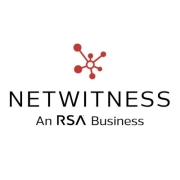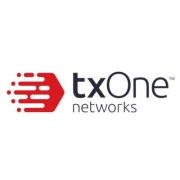Endpoint Protection Platform (EPP) safeguards endpoints by preventing malware, detecting malicious activities, and providing a centralized management system.
Modern EPPs are designed to address the growing threat landscape with features like real-time monitoring, machine learning-based threat detection, and integration with other security tools. They offer comprehensive protection that includes antivirus, anti-malware, and endpoint detection and response capabilities.
What features are critical in an Endpoint Protection Platform?
What benefits should users look for when evaluating an Endpoint Protection Platform?
Industries like finance, healthcare, and retail implement EPP solutions to protect sensitive data, maintain regulatory compliance, and ensure the security of their endpoints. These sectors face particular threats and thus prioritize robust EPP features to mitigate risks.
EPP is essential for organizations to protect endpoints from evolving cyber threats, ensuring continuous protection across all devices and systems.

































































































Enterprise endpoint protection is a technology solution used to protect devices from malicious behavior, malware, and suspicious applications, and also to identify security incidents and provide alerts. By allowing admins to manage all corporate devices, enterprise endpoint protection helps them recognize threats, remediate against those threats, and thus easily and quickly respond to security issues. Enterprise endpoint protection emerged to replace traditional antivirus software and offers prevention methods that work to pre-emptively block known and unknown threats.
Below are 5 different ways to protect an endpoint:
Endpoint protection provides layers of defense that safeguard organizations from cyber threats, large or small. It enables an extra level of visibility into the threat landscape to understand the root cause of endpoint attacks. The goal of endpoint protection is to provide security from malware attacks, to gain insight into malicious activities and behaviors, and to provide the capabilities needed to investigate and remediate threats and incidents.
Some of the most common endpoint protection benefits include:
When evaluating endpoint security products, IT Central Station (soon to be Peerspot) users are clear on what aspects are most important. Proactive protection is a clear indication of superior quality in an EPP solution, since the days of reactive protection are gone. Another essential feature to look for is the capability to block a variety of attack vectors, since testing with known malware simply isn't sufficient. Additionally, our members want to see good customer support, easy installation and removal, and competitive pricing in an endpoint security product.
Endpoint protection for business (EPP) solutions are essential for safeguarding an organization's network and data from cyber threats. These solutions provide comprehensive security measures to protect endpoints such as desktops, laptops, mobile devices, and servers. There are several different types of EPP solutions available in the market, each offering unique features and capabilities. Here are some of the most common types:
1. Antivirus/Antimalware: This is the most basic form of EPP solution that protects endpoints from known viruses, malware, and other malicious software. It scans files and applications for any suspicious behavior and blocks or removes them.
2. Firewall: A firewall is a network security device that monitors and controls incoming and outgoing network traffic based on predetermined security rules. It acts as a barrier between an organization's internal network and external networks, preventing unauthorized access and protecting against network-based attacks.
3. Intrusion Detection and Prevention System (IDPS): An IDPS monitors network traffic for suspicious activities and alerts administrators about potential threats. It can also take proactive measures to block or prevent attacks, such as blocking IP addresses or terminating suspicious connections.
4. Data Loss Prevention (DLP): DLP solutions help organizations prevent the unauthorized disclosure of sensitive data. They monitor and control data transfers, both within the organization and outside, to ensure compliance with data protection regulations and prevent data breaches.
5. Endpoint Detection and Response (EDR): EDR solutions provide advanced threat detection and response capabilities. They continuously monitor endpoints for any signs of malicious activity, such as unusual behavior or unauthorized access attempts. EDR solutions can quickly detect and respond to threats, minimizing the impact of a potential breach.
6. Application Control: Application control solutions allow organizations to control which applications can run on their endpoints. They help prevent the execution of unauthorized or malicious applications, reducing the risk of malware infections and other security incidents.
7. Patch Management: Patch management solutions ensure that all software and applications on endpoints are up to date with the latest security patches and updates. This helps eliminate vulnerabilities that can be exploited by attackers.
8. Mobile Device Management (MDM): MDM solutions are specifically designed for managing and securing mobile devices used within an organization. They provide features such as remote device tracking, data encryption, and application management to protect sensitive data on mobile devices.
Endpoint Protection for Business (EPP) solutions are designed to secure and protect endpoints, such as desktops, laptops, servers, and mobile devices, from various cyber threats. These solutions employ a combination of technologies and techniques to detect, prevent, and respond to security incidents. Here is an overview of how EPP solutions work:
1. Endpoint Security Agents: EPP solutions typically require the installation of lightweight security agents on each endpoint device. These agents act as the first line of defense and continuously monitor the device for any suspicious activities or potential threats.
2. Malware Detection and Prevention: EPP solutions employ advanced malware detection techniques, including signature-based scanning, heuristic analysis, and machine learning algorithms, to identify and block known and unknown malware. They can detect viruses, worms, Trojans, ransomware, and other malicious software.
3. Behavioral Analysis: EPP solutions analyze the behavior of applications and processes running on endpoints to identify any abnormal or malicious activities. They can detect and block zero-day attacks and fileless malware that may evade traditional signature-based detection methods.
4. Web Filtering and URL Reputation: EPP solutions often include web filtering capabilities to block access to malicious or inappropriate websites. They maintain a database of known malicious URLs and use reputation-based systems to assess the safety of websites in real-time.
5. Firewall and Intrusion Prevention: EPP solutions may include a built-in firewall and intrusion prevention system (IPS) to monitor network traffic and block unauthorized access attempts. They can detect and prevent network-based attacks, such as port scanning, denial-of-service (DoS), and man-in-the-middle (MitM) attacks.
6. Data Loss Prevention (DLP): Some EPP solutions offer data loss prevention features to prevent sensitive data from being leaked or stolen. They can monitor and control data transfers, encrypt sensitive information, and enforce policies to prevent unauthorized access or sharing of confidential data.
7. Endpoint Detection and Response (EDR): Advanced EPP solutions may include endpoint detection and response capabilities. EDR enables real-time monitoring, threat hunting, and incident response on endpoints. It provides detailed visibility into endpoint activities, facilitates threat investigation, and helps in mitigating security incidents.
8. Centralized Management Console: EPP solutions typically provide a centralized management console that allows administrators to configure, monitor, and manage security policies across all endpoints from a single interface. This console provides real-time visibility into the security posture of endpoints and enables quick response to emerging threats.
9. Regular Updates and Patch Management: EPP solutions rely on regular updates to keep up with the evolving threat landscape. They receive frequent updates to their malware signatures, detection algorithms, and vulnerability databases. Additionally, they may assist in managing software patches and updates for the operating system and other applications on endpoints.
10. Reporting and Compliance: EPP solutions generate comprehensive reports and logs that provide insights into security events, threats detected, and overall endpoint security status. These reports help organizations meet compliance requirements and assist in security audits.
Endpoint Protection for Business (EPP) Solutions adopt a comprehensive approach that aims to secure organizations' endpoints, such as laptops, desktops, mobile devices, and servers, from a wide range of potential threats and attacks. This overview provides a technical understanding of how EPP solutions function:
1. Endpoint Security Management: EPP solutions offer centralized management consoles or platforms for administrators to monitor and control security across all endpoints. Administrators can define security policies, deploy security updates, and configure settings remotely. They can also enforce security measures, such as implementing password policies, disabling USB ports, or restricting application installations.
2. Real-time Threat Detection: EPP solutions employ real-time scanning capabilities to identify and prevent malware, viruses, ransomware, and other malicious software from infecting endpoints. They use a combination of signature-based detection, behavioral analysis, machine learning, and heuristics to detect known and unknown threats. Suspicious files or activities are flagged, blocked, or quarantined to prevent further damage or spread.
3. Web and Email Security: EPP solutions provide protection against web-based threats by filtering and blocking access to malicious or suspicious websites. They scan email attachments and links for potential threats, preventing phishing attacks, malware distribution, or social engineering attempts.
4. Firewall and Network Protection: EPP solutions incorporate a host-based firewall to monitor network traffic and block any unauthorized or potentially malicious connections. They can enforce network access control policies, ensuring that only trusted devices and connections are allowed.
5. Patch Management and Vulnerability Assessment: EPP solutions assist in managing software updates and patches, helping to mitigate vulnerabilities that attackers can exploit. They scan endpoints to identify outdated software versions, missing patches, or other weaknesses, allowing administrators to apply necessary updates promptly.
6. Data Loss Prevention (DLP): EPP solutions implement data protection measures by monitoring and controlling data transfers and access to sensitive information. They can prevent unauthorized copying to external devices, encrypt sensitive data, and detect and block unusual or suspicious data transfers.
7. Reporting and Analytics: EPP solutions provide detailed reports and analytics to help administrators understand the security posture of their endpoints. They offer insights into threat activity, system vulnerabilities, and endpoint compliance, enabling proactive security measures.
In conclusion, Endpoint Protection for Business Solutions combines various security features, tools, and technologies to protect organizations' endpoints from diverse threats, ensuring secure computing environments, data protection, and compliance.
Endpoint Protection for Business (EPP) Solutions are crucial for modern businesses to defend against evolving cyber threats and safeguard their network endpoints, such as computers, mobile devices, and servers. These solutions provide a range of benefits, enhancing the security posture of organizations and reducing the risk of successful cyberattacks.
1. Comprehensive Threat Detection and Prevention: EPP solutions employ advanced techniques to identify and block known and unknown threats, including viruses, malware, ransomware, and phishing attacks. Real-time monitoring and behavioral analysis help detect suspicious activities and potential zero-day vulnerabilities. Regular updates ensure protection against the latest threats and attack vectors.
2. Advanced Endpoint Security Controls: EPP solutions facilitate centralized management and control of endpoints, enabling administrators to apply consistent security policies across the organization. Granular access controls and permissions restrict unauthorized access and prevent data breaches. Application and device control features prevent the execution of malicious software and unauthorized devices.
3. Proactive Threat Hunting and Response: EPP solutions often integrate with threat intelligence platforms, leveraging up-to-date information on emerging threats. Continuous monitoring allows security teams to proactively identify and respond to potential attacks before they cause damage. Automated incident response capabilities enable rapid remediation, minimizing the impact of security breaches.
4. Enhancing Endpoint Performance: Optimized scanning algorithms and low system resource usage in EPP solutions minimize the impact on endpoint performance, ensuring smooth operations for employees. Background scanning and idle-time resource utilization help maintain a secure environment without interrupting productivity.
5. Simplified Management and Reporting: Centralized consoles provide a unified view of the security status across all endpoints, streamlining management and reducing administrative overhead. Detailed reports and alerts assist IT teams in identifying vulnerabilities, understanding threat trends, and evaluating the effectiveness of security measures.
6. Regulatory Compliance: EPP solutions assist in meeting industry-specific compliance requirements by implementing security controls and monitoring capabilities. Compliance features ensure adherence to data protection and privacy regulations, such as the General Data Protection Regulation (GDPR) or the Health Insurance Portability and Accountability Act (HIPAA).
Implementing Endpoint Protection for Business Solutions is a crucial way for businesses to mitigate the risk of cyberattacks, protect sensitive data, and maintain regulatory compliance. By providing comprehensive threat detection, advanced security controls, proactive threat hunting, improved endpoint performance, simplified management, and compliance assistance, EPP solutions help organizations build a robust security foundation and stay ahead of evolving cyber threats.
Endpoint protection for business (EPP) solutions are critical for safeguarding an organization's network and devices from various cyber threats. These solutions employ a range of techniques to detect, prevent, and remediate threats targeting endpoints such as desktop computers, laptops, servers, and mobile devices. There are several types of EPP solutions available in the market, each with distinct features and functionalities to address specific cybersecurity needs.
1. Antivirus Software: Traditional antivirus software is one of the earliest forms of endpoint protection. It scans files, programs, and websites for known malware signatures. Antivirus solutions provide a basic level of protection but may struggle against complex and evolving threats.
2. Next-Generation Antivirus (NGAV): NGAV solutions utilize advanced techniques, including machine learning algorithms and behavior analysis, to go beyond signature-based detection. They can detect and prevent unknown or zero-day malware by analyzing file behavior and suspicious activities.
3. Endpoint Detection and Response (EDR): EDR solutions focus on threat detection and response, providing real-time visibility into an endpoint's activities. They monitor and analyze system, process, file, and network events to identify potential threats. EDR solutions enable organizations to quickly investigate and respond to security incidents.
4. Endpoint Protection Platforms (EPP): EPP solutions combine antivirus, NGAV, and EDR capabilities into a unified platform. They offer a comprehensive approach to endpoint security by integrating multiple security technologies. EPP platforms typically include features such as firewall, data loss prevention, device control, and encryption.
5. Mobile Device Management (MDM): As the use of mobile devices increases in the workplace, MDM solutions have become crucial. These solutions secure mobile devices, enforce policies, and ensure data protection. MDM solutions allow centralized management of mobile devices, such as remote lock and wipe, application management, and containerization.
6. Cloud-Based Endpoint Protection: Cloud-based EPP solutions provide centralized management, scalability, and easy deployment across multiple endpoints. These solutions leverage cloud resources to store threat intelligence data, perform analysis, and deliver real-time updates to endpoints.
7. Endpoint Isolation: Endpoint isolation solutions focus on isolating potentially compromised endpoints from the network to prevent the spread of threats. This can be achieved through network segmentation, micro-segmentation, or virtualized environments.
In conclusion, the landscape of EPP solutions offers a variety of options to meet the diverse cybersecurity needs of businesses. Whether organizations opt for traditional antivirus software for basic protection or advanced EDR solutions for real-time threat detection and response, it is essential for businesses to select the right combination of endpoint protection solutions to effectively safeguard their network and sensitive data.
EPP provides a comprehensive suite of security measures beyond traditional antivirus software. While antivirus software primarily focuses on detecting and removing known malware, EPP integrates multiple layers of protection, including behavior analysis, application control, and threat intelligence. EPP systems offer prevention, detection, and response capabilities, enabling more robust defense against advanced threats.
What features should I look for in an Endpoint Protection Platform (EPP) solution?When evaluating an EPP solution, prioritize features like advanced threat detection, real-time monitoring, machine learning capabilities, behavioral analysis, and automated response mechanisms. Ensure the platform supports multi-vector threat detection, integrates with other security tools, and offers comprehensive reporting. Look for scalability, ease of management, and regular updates to keep up with emerging threats.
How does an Endpoint Protection Platform (EPP) integrate with existing security infrastructure?EPP solutions are designed to work seamlessly with existing security infrastructure. They typically offer APIs and integration plugins to connect with Security Information and Event Management (SIEM) systems, firewalls, and other security tools. This interoperability enhances threat visibility and enables more coordinated responses. Check vendor documentation for specific integration capabilities and compatibility with your current systems.
Can Endpoint Protection Platform (EPP) prevent zero-day attacks?Yes, EPP can help prevent zero-day attacks using advanced detection techniques such as machine learning and behavioral analysis. These technologies identify unusual patterns and behaviors indicative of unknown threats, enabling proactive defense. While no solution can guarantee absolute prevention, EPP significantly reduces the risk by providing continuous monitoring and real-time threat intelligence updates.
How does Endpoint Protection Platform (EPP) improve incident response times?EPP streamlines the incident response process through automation and real-time monitoring. Integrated tools provide immediate alerts and actionable intelligence, allowing security teams to quickly identify and address threats. Automated response mechanisms, such as isolating affected endpoints or blocking malicious activities, further reduce response times and limit potential damage. EPP also provides detailed logs and reports to support post-incident analysis and future prevention strategies.